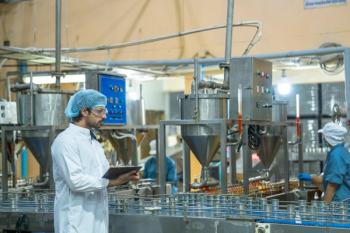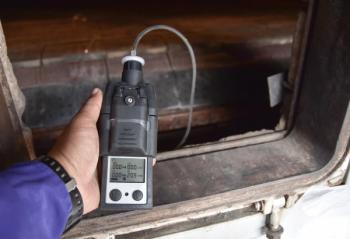
Tracking Lanthanide Dissolution Into Organic Media
In the second and final part of our interview with Rob Lascola, he addresses the main challenges in achieving accurate acidity measurements using Raman spectroscopy in complex, highly absorptive systems, as well as explains what he has learned about dissolution mechanisms, and how these insights can influence future nuclear processing strategies.
In solvent extraction, Raman spectroscopy is used to monitor actinide and nitrate concentrations, with nitrate serving as a proxy for acidity. However, actinides absorb Raman excitation light, suppressing the Raman signal and causing a negative bias in nitrate measurements. To mitigate this, absorbance and Raman spectra are combined to correct for signal attenuation in real-time. Chemometric methods are developed to avoid physically characterizing the absorption pathway, relying instead on pre-measured absorbance spectra to account for changes in the Raman signal. Raman spectroscopy also aids in understanding the molecular structures of organic solutions, which are crucial for selectively extracting actinides from aqueous phases into organic phases.
At the 2025 SciX Conference, this topic was explored. Rob Lascola, who is a Senior Fellow Scientist in the Chemical Processing and Characterization section at Savannah River National Laboratory (SRNL, Jackson, South Carolina), discussed in his presentation how Raman spectroscopy is being used in the energy sector for fuel dissolution (1). Lascola highlighted in his talk how his team’s research is part of a larger collaborative effort across all Department of Energy National Laboratories to apply analytical spectroscopic techniques for nuclear fuel cycle research (1). The hope is that these efforts will lead to better process control and safety in nuclear and improving process control and safety in nuclear material management (1).
In the first part of our interview with Lascola, he discussed how Raman spectroscopy complements other techniques in fuel dissolution and solvent extraction and what Raman can detect in off-gas streams (2). In the second and final part of our interview with Lascola, he addresses the main challenges in achieving accurate acidity measurements using Raman spectroscopy in complex, highly absorptive systems, as well as explains what he has learned about dissolution mechanisms, and how these insights can influence future nuclear processing strategies.
This interview clip is part of our ongoing coverage of the SciX Conference. To stay up to date with the latest coverage of the 2025 SciX Conference, click
References
- SciX Conference, Applications of Raman Spectroscopy For Monitoring and Understanding of Nuclear Materials Processing. SciX Conference. Available at:
https://scixconference.org/2025-final-program (accessed 2025-10-14). - Wetzel, W. Off-Gas Monitoring for Fuel Dissolution. Spectroscopy. Available at:
https://www.spectroscopyonline.com/view/off-gas-monitoring-for-fuel-dissolution (accessed 2025-10-14).
Newsletter
Get essential updates on the latest spectroscopy technologies, regulatory standards, and best practices—subscribe today to Spectroscopy.





